(3802 products available)
































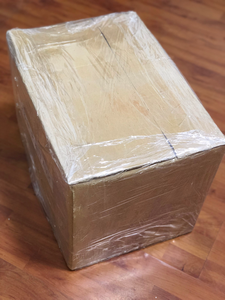









































































































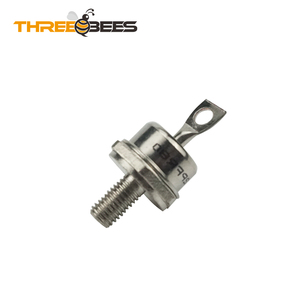
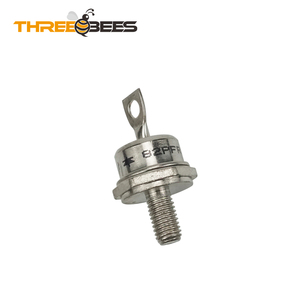
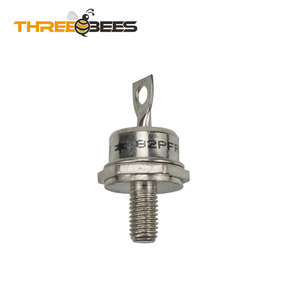
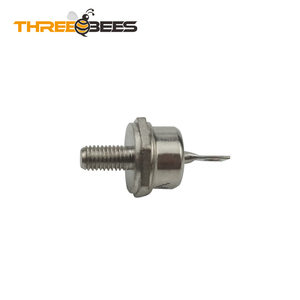
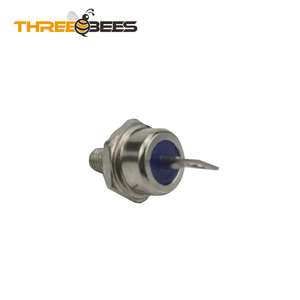





















































Rectifier diodes for generator kits are important materials that change AC to DC. People in many industries, like construction and mining, need these tools for their generators to work well. To make sure these parts have what it takes to work in tough environments, makers pay close attention to their styles, how they resist different things, and their shapes. Here are the main types of rectifier diodes for generators.
Silicon Canadian diodes are known for their high strength and ability to work without much cooling. They can handle a lot of electrical power and are often used where high power is needed, like in large generator sets. They work well in bad weather, adding to their use in many places. These diodes are also very good at changing AC to DC, giving a steady current for machines.
Stud mounting diodes are compact but very strong. Even small models can work with several hundred volts of electricity. Because of their compact size, they are great for small or rough generators. Photovoltaic systems and marine motors also use them a lot. Despite being small, their diodes handle large electrical loads without getting hot.
Punching diodes differ from other types because they are made with large mechanical tools. This makes them less costly but also less strong than welded models. Solar panels often contain punching diodes, but they may not work as well in tough places. These diodes prevent currents from going the wrong way, helping systems that have many connected panels. Even with their low cost, they provide good protection for generators.
Generators used in hard conditions often have welded diodes. Welding the diodes on makes them able to resist high temperatures and strong currents. These diodes function well for a long time, meaning less need for repairs. Mining and oil rigs rely on their generators, so they often use welded diodes. Their strong design ensures the diodes can handle the demands of big power systems.
The materials and long-lasting features of rectifier diodes are crucial for their smooth operations within a generator. Complex work environments put constant strain on these small parts, so makers choose materials that can take the pressure. High-grade metals and silicon keep the diodes from breaking down in generators used for heavy tasks.
Insulating materials surround diodes to help them differ currents safely. Generators make much heat, and diodes need proper insulation to avoid damage. Materials like epoxy resin coat diodes to keep them cool. Without good insulation, diodes could fail from internal shorts. In remote places, broken diodes create big problems. That is why robust insulation is critical.
Insulation also protects diodes from moisture and debris that can enter generators. In fields like construction, dust and dirt can easily damage delicate parts. Well-insulated diodes can last longer in these conditions. The mining industry also works in dirty environments, so diodes must have extra protection. Insulating diodes from electrical spikes extends their life. Spikes can occur when the generator suddenly changes load.
Silicon is the primary material used to produce silicon rectifier diodes. Silicon diodes are common because they can control large voltages. Generators used in industries like oil and mining often have diodes that can handle 400 volts or more. In these jobs, failure is not an option, so silicon diodes are key. Even at high temperatures, silicon diodes remain stable. This is why they are favored for Japanese generators, which operate hotter than others. The ability to endure extreme environments makes silicon diodes reliable for heavy work.
Copper and aluminum parts make diodes even more durable. These metals let diodes move heat away and stay cool under load. Cooling fans help keep diodes from overheating. In high-load situations, such as construction sites, good heat dissipation is essential. Copper and aluminum also prevent electrical shorts within the diode. Generators create lots of electrical energy, and shorts could cause failures. Copper and aluminum keep diodes safe from this risk.
Protective coatings shield diodes from elements that could damage them over time. Coatings reduce wear from environmental factors like moisture and dust. Corrosion can easily form on diodes exposed to the elements. Weatherproof covers on diodes stop this from happening. Coatings also prevent debris from entering the generator and fouling diodes. In outdoor settings, diodes do not have time to clean before repairs, so protective covers matter.
Rectifier diodes are needed in generators used for work in the field. They ensure the DC output is steady and strong. This is critical in the mining, construction, and maritime sectors. Industry professionals depend on strong and effective diodes to keep their generators functioning smoothly. Here are some business use cases of this product.
For mining work, companies rely on their generators to provide power without fail. Diodes keep the output steady so tools and machinery run right. Remote mines cannot easily make repairs, so their parts must work well. Strong diodes also help generators power pumps that remove water from mines. If a diode fails, it could cause the entire generator to stop. This is why diodes need to last long in the tough conditions found underground.
Like the work in mines, oil rig jobs offshore are also hard. Waves and storms make it hard to fix broken parts, so diodes must be tough. Rectifier diodes stop the DC output from going downhill when the generator is under load. They also resist water and corrosion to stay effective. Oilrigs often depend on digital controls, which need steady power. Diodes help to provide this.
Military bases work in hard places and need power to carry on. Diodes in their generators provide this power. Bases use their equipment to keep the base secure, such as keeping drones flying or making medicine for injured troops. When fighting or working in remote places, troops depend on generators for power. Rectifier diodes keep these generators working no matter what.
Construction work often uses huge electrical equipment powered by generators. The diodes in those generators must handle high loads. Construction tools and machines cannot work without power. If the power goes out, workers on job sites may have to stop working and will not be able to get anything done. Construction crews often work in remote places, so repairs are not convenient. That is why there must be strong diodes with long lives. They help keep the work done quickly.
Telecom towers often sit far away with no other power source. They rely on generators to send signals. Efficient diodes ensure the signal stays strong. Without working power, people cannot call or connect online. This will affect businesses that rely on internet services. Telecom towers depend on steady diodes so their service is never lost. Diodes must be reliable at all times.
To select the best rectifier diodes for generators, there are important factors to consider. Each of these aspects is vital for generators in tough operating conditions. Industry experts weigh these elements to pick reliable diodes.
The diode voltage rating should exceed the generator's peak voltage. A diode that is rated for lower voltage may fail. Stay on the safe side and choose a diode rated for more voltage than required. These factors are typically listed in the generator guide. The diode must also support the generator's current output to avoid overloads. Current ratings should meet or exceed the generator's maximum amperage.
Heat is another important factor. Generators create a lot of heat, so diodes must withstand this. Look for diodes with good cooling features, such as heat sinks. Strong diodes with better heat dissipation keep generators running longer. If diodes get too hot, they may fail and big troubles will occur. Make sure there are proper cooling methods so diodes do not fail from overheating.
Choose diodes made from tough silicon materials that resist wear. Silicon carbide diodes endure more stress than standard silicon types. Rectifier diodes with welded parts add to their strength. The materials have to be durable enough to handle constant power surges. Poor quality diodes fail fast and cause outages.
Generator types should also be considered when choosing the diode. Commercial generators, marine models, and industrial sets each have unique needs. What works for one may not work for another. Stay in line with the manufacturer's guidance. Both AC and DC generators need different diodes. Ensure the diode is made for the correct current type. Mixed-up diodes cause big issues with power output. Always double-check the specifications before making the final purchase.
A1: It allows the generator to give smooth DC power for machines.
A2: They can last 10 years or more as long as regular maintenance gets done.
A3: No, they are made to endure heat and cold without breaking down.
A4: Yes, silicon carbide also endures harsh elements like power surges.
A5: No, their installation is fairly easy for skilled technicians.